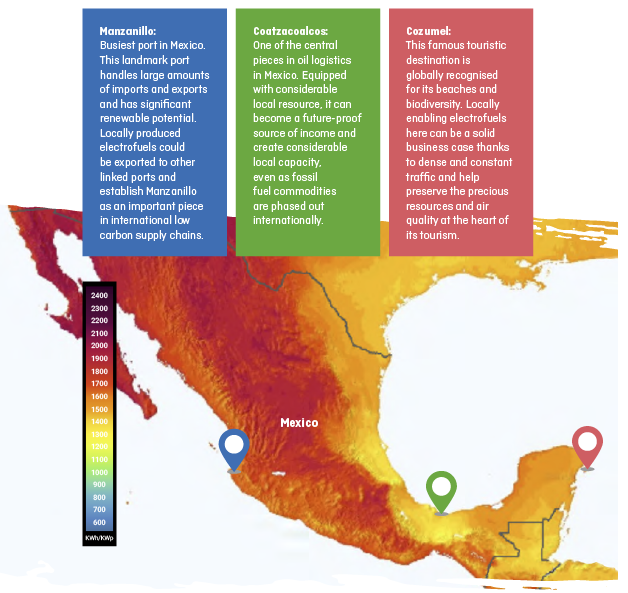Huge potential for green maritime fuels in Mexico
By Julian Atchison on September 27, 2021

A new study from EDF and Ricardo outlines the significant opportunities for Mexico to produce, consume and export hydrogen-based maritime fuels like ammonia within the next decade.
Huge green energy surplus
The authors forecast that Mexico’s renewable energy generation potential is anywhere between 864 and 4,094 TWh/year by 2030: more than enough to meet the forecast 600 TWh/year national electricity demand. This huge surplus of green power (plus Mexico’s position on some of the world’s busiest shipping routes) presents a unique opportunity. Even a modest target – providing renewable electricity and zero-carbon fuels to 5% of the vessels visiting Mexican ports – could attract between US$6-9 billion in investment to get the necessary infrastructure built this decade.
Diverse range of zero-carbon shipping opportunities
Via its port-by-port case studies, the study also highlights a diverse set of opportunities available for green, hydrogen-based maritime fuels. The energy demand of vessels visiting Manzanillo on Mexico’s Pacific coast is significant – about 40 TWh/year. Providing international container ships and carriers with easy access to zero-carbon maritime fuels and bunkering facilities represents an obvious decarbonisation opportunity, along with potential exports. Smaller ports like Cozumel and Coatzacoalcos on the Gulf coast require much less energy, but the adjacent production and supply of zero-carbon fuels could help decarbonise cruise lines, passenger ferries and oil & gas shipping within the Gulf.
Latest in a series of maritime fuel reports
As already reported at Ammonia Energy, Ricardo and EDF have published a number of studies looking at the potential of several countries to produce zero-carbon maritime fuels. Earlier this we heard about South Africa‘s potential to be a key player in the region, while in 2019 Chile and Morocco (case study in the larger Sailing on Solar report) were featured.